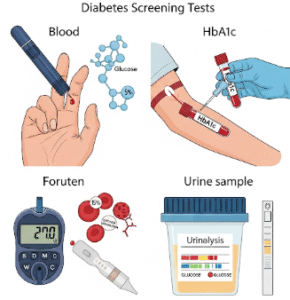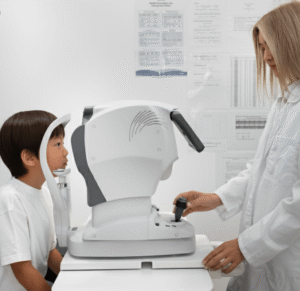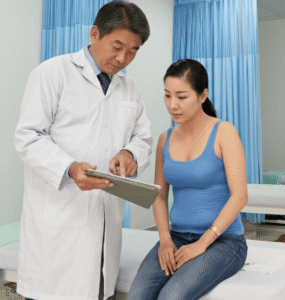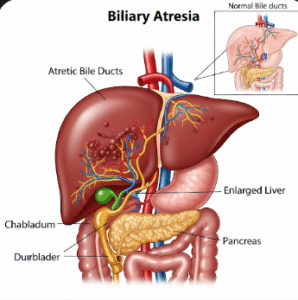Overview
Vaginal gas, also known as vaginal flatulence or queefing, is the release of air from the vagina, often producing a sound similar to flatulence. It is usually harmless and common, occurring during sexual activity, exercise, or certain movements.
➤ Vaginal gas is typically not associated with gastrointestinal issues but may cause embarrassment or concern.
➤ It can occur at any age but is more common in women with pelvic floor weakness, recent childbirth, or structural changes in the vaginal canal.
➤ In Korea, gynecology and pelvic health specialists provide diagnostic evaluation, pelvic floor therapy, and corrective treatments for persistent or bothersome cases.
Key Facts
► Definition: The involuntary release of air from the vagina, often producing a sound.
► Prevalence: Common among women, especially those who are sexually active or postpartum.
► Associated symptoms: Typically none, but may be accompanied by pelvic pressure or mild discomfort.
► Risk factors: Weak pelvic floor muscles, vaginal laxity, pregnancy, childbirth, aging, or surgical history.
► Treatment in Korea: Focuses on pelvic floor rehabilitation, lifestyle adjustments, and, in rare cases, surgical correction.
What Is Vaginal Gas?
Vaginal gas occurs when air enters and becomes trapped in the vaginal canal, eventually escaping with a sound.
➔ This phenomenon is medically benign and is usually not a sign of infection or serious disease.
➔ Causes include physical activity, sexual intercourse, changes in vaginal muscle tone, or anatomical variations.
➔ Persistent or frequent vaginal gas may indicate pelvic floor weakness or prolapse, which can be evaluated by specialists.
What Symptoms Are Related to Vaginal Gas?
Vaginal gas is mostly asymptomatic, but some women may experience:
→ Audible air release during movement or intercourse.
→ Mild pelvic pressure or fullness, especially in cases of pelvic floor weakness.
→ Embarrassment or anxiety about social or intimate situations.
→ Rarely, associated urinary incontinence if pelvic floor muscles are weakened.
→ No foul odor or gastrointestinal symptoms typically accompany vaginal gas.
Causes / Possible Causes of Vaginal Gas
Physical Activity and Posture
➤ Movements such as squatting, stretching, or certain yoga positions can force air into the vagina.
➤ Exercise or heavy lifting may temporarily cause vaginal air to be trapped and released.
Sexual Activity
➔ Penetrative sex or certain sexual positions can introduce air into the vaginal canal, leading to queefing.
➔ Commonly occurs during penetration, thrusting, or withdrawal.
Pelvic Floor Muscle Weakness
→ Weak or lax pelvic floor muscles from childbirth, aging, or hormonal changes can increase air trapping.
→ Pelvic organ prolapse, such as cystocele or rectocele, may exacerbate the condition.
Anatomical Factors
► Vaginal shape, size, and tone affect air retention and release.
► Surgical procedures or injuries affecting vaginal walls may temporarily alter vaginal air dynamics.
Other Contributing Factors
➤ High intra-abdominal pressure during straining, coughing, or sneezing.
➤ Rarely, underlying pelvic organ prolapse may require medical evaluation.
When Should I See My Doctor?
Medical consultation is warranted if:
➤ Vaginal gas is frequent and accompanied by pelvic discomfort, pain, or urinary incontinence.
➤ There are other symptoms such as bleeding, unusual discharge, or foul odor.
➤ Pelvic organ prolapse is suspected, causing bulging, pressure, or difficulty with urination or defecation.
➤ Persistent anxiety or impact on quality of life or sexual activity occurs.
➤ Early evaluation can rule out pelvic floor disorders, infections, or structural abnormalities.
Care and Treatment
Lifestyle and Self-Care Measures
► Pelvic floor exercises (Kegel exercises) strengthen vaginal and pelvic muscles.
► Maintain a healthy weight to reduce pelvic pressure.
► Avoid excessive straining during exercise, lifting, or bowel movements.
► Practice awareness of body posture and movements that may introduce air.
Medical and Therapeutic Treatments
➔ Physical therapy focusing on pelvic floor rehabilitation.
➔ Biofeedback and electrical stimulation in severe cases of muscle weakness.
➔ Vaginal pessaries for mild prolapse to restore support and reduce air trapping.
Surgical or Advanced Interventions
→ Rarely, surgical repair may be required for significant pelvic organ prolapse or anatomical changes.
→ Vaginal wall tightening procedures may help reduce persistent queefing.
→ Consultation with a gynecologist or urogynecologist ensures proper evaluation and treatment planning.
Treatment Options in Korea
Korean gynecology and pelvic health centers provide comprehensive care for vaginal gas:
Diagnosis in Korea
➤ Pelvic examination to assess muscle tone, prolapse, or structural issues.
➤ Imaging studies like ultrasound or MRI if prolapse or organ displacement is suspected.
➤ Patient history review of sexual activity, childbirth, and physical activity.
Non-Surgical Care
► Pelvic floor exercises guided by physiotherapists.
► Lifestyle advice to prevent excessive air trapping.
► Education on sexual positions and physical activity to minimize queefing.
Advanced and Surgical Care
➔ Pelvic organ prolapse repair for women with significant anatomical changes.
➔ Vaginal wall tightening procedures in selected cases.
➔ Multidisciplinary approach integrating gynecology, physical therapy, and patient education.
Rehabilitation and Lifestyle Support
→ Ongoing pelvic floor monitoring and exercise programs.
→ Guidance on sexual health, physical activity, and pelvic wellness.
→ Long-term follow-up for patients with chronic pelvic floor weakness or prolapse.
Korean hospitals combine expert gynecologists, advanced diagnostics, and rehabilitative care, ensuring effective management of vaginal gas and improved pelvic health.













